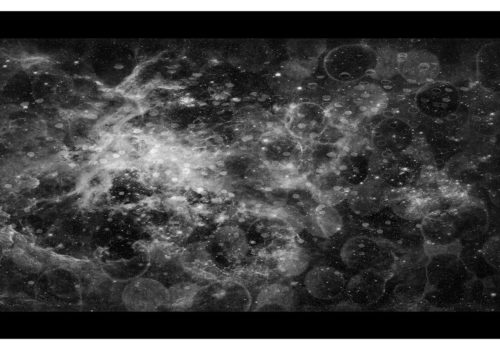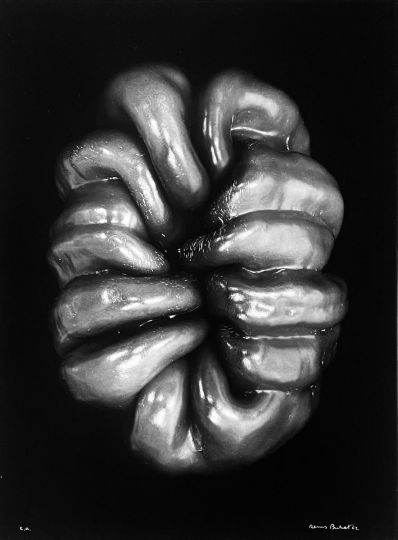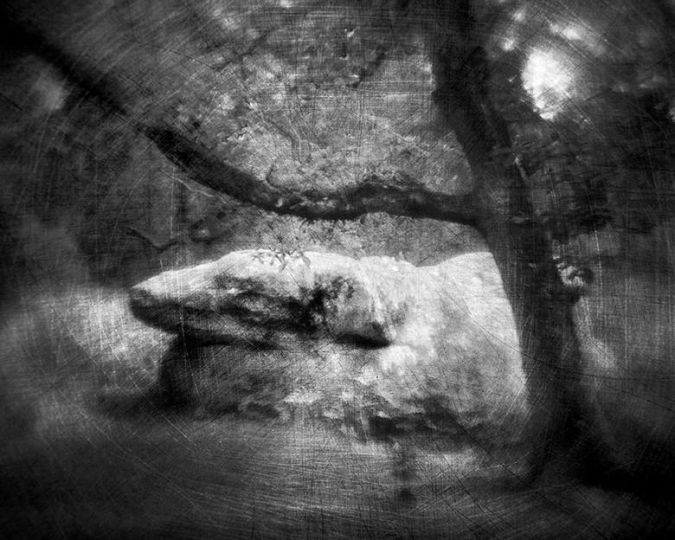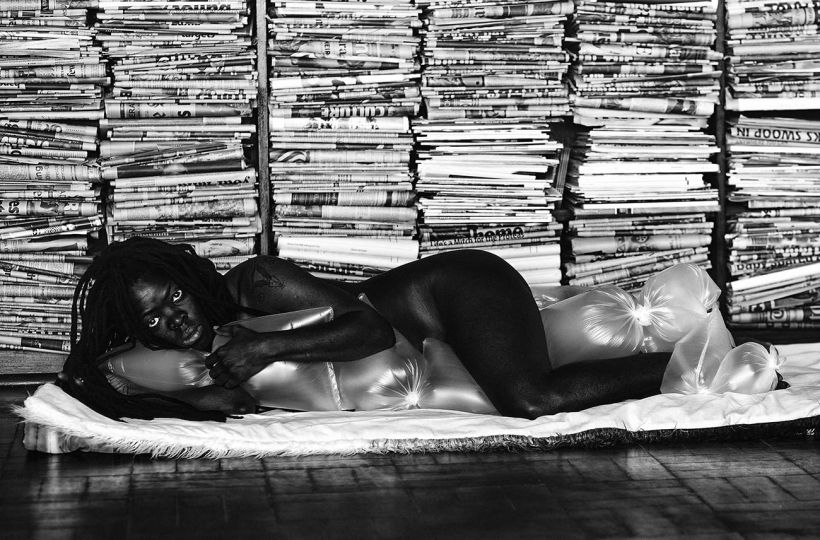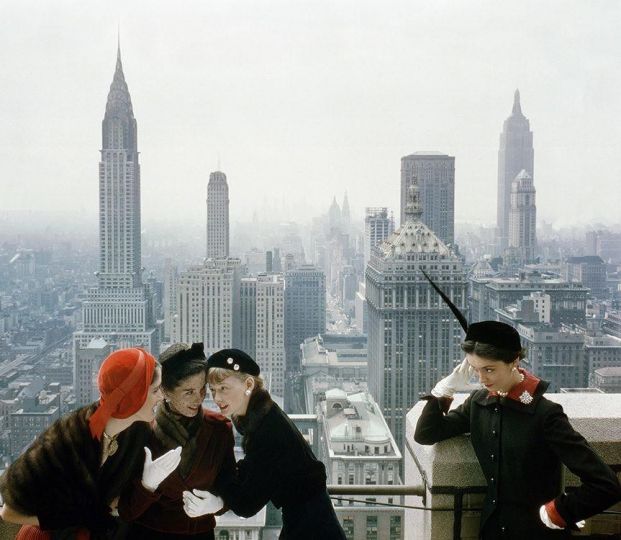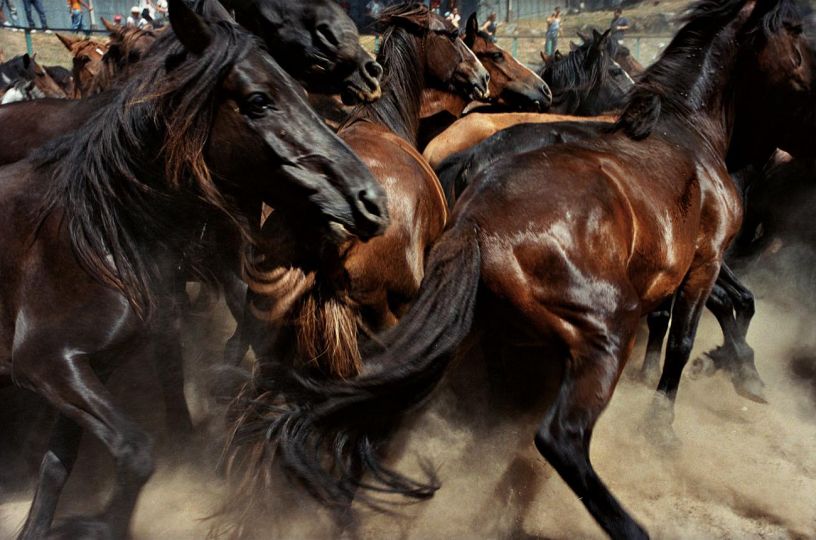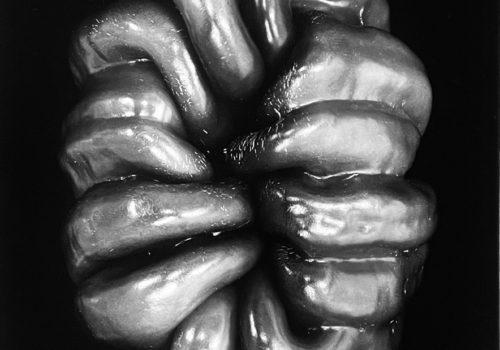When I feel a terrible need of—shall I say the word?—religion. Then I go out at night and paint the stars. – Vincent van Gogh, letter to Théo van Gogh, September 1888.
Thomas Brummett is an artist who is on a journey that follows two intertwined paths. Thoughtful and patient, he is on a quest to discover the essence of the natural world by focusing on the immediate before him—a twig, a fleeing light beam. He is also an explorer of the medium of photography, experimenting with the myriad ways of making an image with light and marks on the surface of light sensitive paper.
All Brummett’s work is from his life-long series “Rethinking the Natural”
Born in Colorado in 1955, Brummett matured with an appreciation of arid deserts and soaring mountains. He was educated in ceramics and photography at the Colorado State University (BFA, 1979) and the Cranbrook Academy of Art in Michigan, (MFA, 1982), after which he settled in Philadelphia and had a daughter. Raised in a Christian (Episcopalian) family that includes several members of the clergy, after reaching adulthood and traveling to India and Asia, Brummett found that the journey described in Western Abrahamic religions had lost its meaning for him, and he was drawn to Eastern Taoist/Buddhist theology
Rather than embarking on a pilgrimage of transcendence to a Deity who resides above and independent from the universe, Brummett found himself following Eastern monastic traditions that embark on a journey of immanence—intense observation of the world at hand. Such intense focus on the immediate resonates with the scientific method, and thus it is not surprising that Taoist/Buddhist thought permeates modern science and mathematics, as in the writings of Austrian logician Ludwig Wittgenstein who wrote: “the place I must get to is the place where I already am” (Culture and Value, 1930). This mix of meditative practices and modern science is a thread running through Brummett’s art.
By the 1990s the artist had found his voice in still lifes of plants such as Poppies, which he shot on black and white film and printed as a silver gelatin print, reprocessed by bleaching and giving it a type of sepia tone, which lent it an air of nostalgia. Brummett’s early training in ceramics gave him a lifelong appreciation for the chemistry of surface, as well as knowledge of Asian ceramic traditions, especially Japanese raku (hand-shaped, low fire ware, as in tea bowls). After building up his original image, Brummett then scans it and enlarges it many times life-size, giving each humble subject—a flower, a leaf—a monumental, iconic presence, and also allows the viewer to see his manipulations of the original silver print. He prints the image as pigment prints, which are the modern equivalent of a plate-less lithograph and released in a limited edition. (Nature Morte series, 1994-96). Only after the work reaches this scale is it finished.
The plants in the Desert series (1998-99) survive in one of the hottest, driest places on earth, Arizona’s Saguaro National Park, home to the giant saguaro cactus, which gives these plants a mythic quality—life against death, Eros versus Thanatos. Brummett’s sepia-toned plants continue the tradition of early twentieth-century still life photographs of the American Edward Weston and the German Karl Blossfeldt
In the Nocturne series (2005), Brummett presents some of his night landscapes in a circular format on black background, reminding the viewer that light enters the human eye and the camera through a membrane with a circular opening—the iris—named for the messenger goddess Iris, who travelled though the heavens displaying her communication as a rainbow (Homer, Iliad, 8th century BC). Brummett creates these night landscapes with subtle fluctuations of light/dark—iridescence—to give them a magical quality long associated with light. The large triptychs are based on the view out three windows of a Japanese Zen garden he visited that was planted for viewing only from inside.
In addition to plants, Brummett has also photographed animals—zebras, lions, and tigers in captivity—working with animal handlers so that he could get these wild animals in his viewfinder (Animalis, 2005). Like the plants in the Nature Morte series, many of the animals are photographed on a plain background. Each animal is presented in solitude in a sepia haze. Brummett was inspired to do this series after seeing the bison, deer, and horses that prehistoric peoples painted on the plain expanse of walls of the caves at Lascaux.
Based on plants and animals that can be seen with the naked eye, Charles Darwin formulated the theory of evolution (Origin of Species, 1859), which is today our secular creation story, what E. O. Wilson calls “the epic of evolution:” all life on earth is connected on a tree of life. Since the mid-nineteenth century this holistic view has been extended to all of nature by physicists and astronomers using lenses—microscopes and telescopes— to extend human vision. Following in the footsteps of these scientific path- finders, Brummett has adopted their tools. He used a microscope to photograph diatoms, marine microorganism encased within a cell wall made of silica (Diatoms, 2002). Brummett photographed diatoms that were mounted on a glass slide by Klaus Kemp, a British practitioner of the Victorian art of assembling diatoms into microscopic designs. Using a transmission light microscope, Brummett recorded light passing through the specimens, which he arranged in circles and lines as did the Victorians. The nineteenth- century inventors of color photography faced the problem that the prints faded quickly. To correct this, the Frenchman Louis Ducos du Hauron invented a carbon pigment printing process which he patented and published in the 1860s. Brummett printed this series using Ducos du Hauron’s rare, old process with carbon and oil pigments, which remains today the only photographic color process that retains true color for 500 years.
In the series Nature Morte and Desert, Animalis, and Nocturne Brummett selectively controlled the focus of the images to create different types of line quality, as well as mimic how our eyes can only focus on one area at a time. In the next series, Light Projections the artist controlled the “circles of confusion” a lens can produce when out of focus. A “circle of confusion” is a term in optics for pinpoints of light (commonly known as bokeh [from the Japanese for “blur”]), which is an artifact of the lens that the artist describes as “an optical effect a lens produces with out of focus.” Brummett’s method of controlling and making images out of these so-called “circles of confusion” has never been done in the history of photography.
According to the artist, the prints in this series “represent the physical manifestation of Light = The Infinite.” As the artist has stated: “The Light Projections
for me are the perfect visual symbol of the Infinite. All light is a part of the natural world. Light is the very basis of the natural world and all life and energy. . . . [In this series] I was not shifting my attention away from the natural world but to its very essence. I was taking the natural world down to its purest form—Light.” With these words, Brummett is following in the footsteps of mystics throughout the ages who have associated light with infinity, and given these concepts divine associations. Notice that Brummett capitalizes “Light” and “the Infinite”, thus personifying/deifying them in the classical Greek
tradition of “the Good” “the Just” and “the Triangle” which were, according to Plato, all divine. This association of light, infinity, and divinity took deep root in Western thought: “Every good gift and every perfect gift is from above, and cometh down from the Father of Lights” (Pseudo-Dionysius the Areopagite, The Heavenly Hierarchy, ca AD 500); “Allah is the Light of the heavens and the earth” (Qur’an, AD 609-32); “The Judeo- Christian God is “Absolute Infinity” (Absolut Unendlichen) (Georg Cantor, “Contributions to the Theory of the Transfinite,” 1887).
In modern secular culture light continues to be seen as special after scientists discover that energy from sunlight is the source of life on earth and the pattern of wavelengths in starlight carries messages from distant places. Light also retains an aura of mystery because Albert Einstein built modern cosmology on the founding principle that light travels at only one speed. When a photon of light leaves a hydrogen atom, unlike any other mass in nature it doesn’t start from zero and speed up, but rather it moves only at one speed—the speed of light (186, 282 miles per second). Why that speed? That’s just the way it is, or to quote the Chinese Taoist monk Lao Tzu (third century BC), it follows the Tao—the way of nature. Many modern and contemporary artists, like Brummett, have been fascinated with light—the source of vision, the instrument of photography, the tool of knowledge (enLIGHTenment). For example, the sculptor James Turrell, who grew up in the Society of Friends (“Quakers”) believing that a person finds guidance by discovering one’s own “inner light,” makes light-filled environmental sculptures, such as Roden Crater (begun in the 1970s) that are a place where the viewer can mediate. Brummett’s art also shares themes linking light/infinity/divinity with the divinely named Rothko Chapel (1971) by Mark Rothko and Seed Cathedral (2010) by Thomas Heatherwick.
An amateur astronomer can easily arrange to photograph through a ground-based telescope, but a non-scientist cannot book time on a telescope that orbits above earth’s atmosphere. So for photographs of outer space, Brummett used images taken by the Hubble Space Telescope that NASA makes available to the public. Starting with one of these recordings of light—a transatmospheric look back in time—the artist worked like a printmaker and manipulated the image, desaturating the hue and layering the image with other patterns, all of which he has photographed from nature (Infinities [of Earth and Heaven] series 2013-16). The layers include images of stars, magnolia trees, a recording of snowflakes hitting a scanner, as well as real dust and mold from the artist’s studio. In these images Brummett describes his intention as to recreate William Blake’s idea of what the world would look like to all of us.
Borrowing a term from thermodynamics, the artist calls his darkroom development process “entropic” (transfer of energy): “I print the image down to black and then resurrect it with bleaches, brushes and a redevelopment process. Each image is unique because the process is so naturally random. The bleaches attack the metal in the paper literally eating it away.” The process is entropic because “the silver atoms move from a very ordered state to a chaotic state of dissolution or fragmentation, which give me a very beautiful line or edge.”
The parallel paths of the artist’s journey are clearly manifest in the series Infinities and Light Projections: Brummett’s observations of the natural world are present in the layered images of earth and sky, as well as his exploration of the process of photography. Each has led him to explore the topic of focus, using a lens, light and photosensitive paper. Brummett’s Light Projection series, consisting of overlapping “circles of confusion,” are not a picture of something “out there” but rather a recording of an artifact of the lens.
What is the essence of photography? Brummett answers: “Light” (Light Projection series, 2012-present). His reflection on the nature of photography is part of the tendency of modern artists to examine the nature of their media, yielding a century of l’art pour l’art—art that is self-reflectively about the nature of art. What is the essence of painting? The Russian Constructivists answered,“ a flat surface covered with paint “everything would appear to man as it is, Infinite” (Aleksandr Rodchenko, Red, 1921). What is sculpture? They replied, “simple geometric forms” (Vladimir Tatlin, Corner Counter-Relief, 1914-15). Brummett’s focus on light brings to mind the British filmmaker Anthony McCall’s more recent declaration of the essence of film. McCall illuminated a 16-mm projector in a darkened room and directed the audience’s attention (not to an image on a screen) but to the projected cone of light (Line Describing a Cone, 1973). In Brummett’s Light Projection series, the artist has reduced photography to its essential element: light.
The arc of Brummett’s career has followed the development of science over the past two centuries: he began observing flora and fauna in the visible world around him, then expanded his vision using a microscope and telescope, while concurrently
examining his aesthetic media—light and lenses. The artist’s journey is in a long tradition, from the Pythagoreans “All is one” (5th century BC) and Lao Tzu’s declaration that the Tao (Way) of nature comes from itself (3rd century BC), to Charles Darwin, who wrote that all earthly creatures are connected on a tree of life (19th century AD) and Albert Einstein, who said that the speed of light is a constant throughout the cosmos (20th century AD). Brummett follows in the footsteps of pilgrims throughout the ages who
have asked profound questions that may be unanswerable (or even unintelligible), a quest that continues today in a secular context and is expressed in today’s scientific worldview, which is the central metaphor of Brummett’s art: The universe has a wholeness with which humans are one.
Lynn Gamwell
Lynn Gamwell is an American author and professor at the School of Visual Arts in New York. All Thomas Brummett’s quotes are from an e-mail correspondence with the author in July 2016.
Thomas Brummett, Of Earth, Heaven & Light
Through January 14, 2017
Galerie Karsten Greve
5 rue Debelleyme
75003 Paris
France
http://www.galerie-karsten-greve.com/fr

